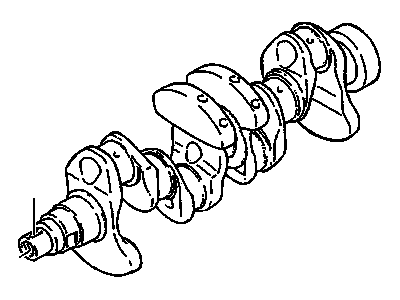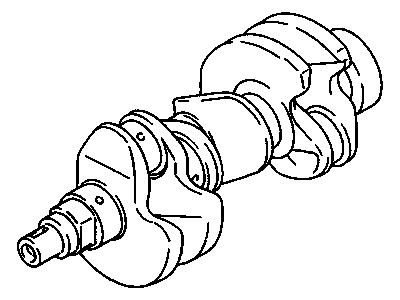
My Garage
My Account
Cart
Genuine Chevrolet Metro Crankshaft
Crank Shaft- Select Vehicle by Model
- Select Vehicle by VIN
Select Vehicle by Model
orMake
Model
Year
Select Vehicle by VIN
For the most accurate results, select vehicle by your VIN (Vehicle Identification Number).
2 Crankshafts found
Chevrolet Metro Crankshaft
Each OEM Chevrolet Metro Crankshaft we offer is competitively priced and comes with the assurance of the manufacturer's warranty for the part. Furthermore, we guarantee the speedy delivery of your orders right to your doorstep. Our hassle-free return policy is also in place for your peace of mind.
Chevrolet Metro Crankshaft Parts Questions & Experts Answers
- Q: How can the crankshaft be removed from the engine after it has been taken out on Chevrolet Metro?A:The crankshaft can only be removed after the engine has been taken out of the vehicle, assuming that the flywheel or driveplate, crankshaft pulley, timing belt, oil pan, oil pump, and Piston/connecting rod assemblies have already been detached. Before removing the crankshaft, check the endplay by mounting a dial indicator with the stem aligned with the crankshaft and touching one of the crank throws. Push the crankshaft to the rear and zero the dial indicator, then pry it to the front and check the reading to determine the endplay. If the endplay exceeds specifications, inspect the crankshaft thrust surfaces for wear; if no wear is found, new thrust bearings should resolve the issue. If a dial indicator is unavailable, feeler gauges can be used by prying or pushing the crankshaft to the front and slipping the gauges between the crankshaft and the thrust bearing's front face to measure clearance. Check the main bearing caps for markings indicating their locations, ensuring they are numbered consecutively from front to rear; if not, mark them accordingly. Loosen the main bearing cap bolts gradually until they can be removed by hand, noting any stud bolts for proper reinstallation. Gently tap the caps with a soft-face hammer to separate them from the engine block, using the bolts as levers if necessary, and take care not to drop the bearing inserts. Finally, lift the crankshaft out of the engine, ensuring the bearing inserts remain in place, and return the caps to their respective locations on the engine block, tightening the bolts finger-tight.













